Botulism and How to Can at Home Without Fear
Botulism is a real concern for anyone who cans at home. Learn how to avoid it and how to tell if you might have it in your preserves.
If you have been canning at home, you might be worried about botulism.
I know I have!
It is a serious issue but in this post, I am hoping to give you some background and facts so that you can make decisions based on knowledge, not fear.
Unfortunately, I have to make this disclaimer right away: I am not a professional or expert in any way and this article only represents my personal opinion. You must educate yourself on safe home canning practices and do what you feel is best for you and your family!
This post may contain affiliate links, which means I make a small commission at no extra cost to you. You can read my full disclosure here.
Why write about home canning and botulism?
I love making jams at home and have even talked about the fact that I neither use a water bath canner nor a pressure canner.
After I posted that, I admit that I looked at my homemade jams and jellies with different eyes. How would I know whether they were safe to eat? What if I had botulism growing in there?
That is when I decided to learn more about this bacteria. What I learned is so interesting that I want to share it with you!
Even though there is quite some science behind this entire topic, my goal was to break it down and make it not so scientific-sounding for the home canner.
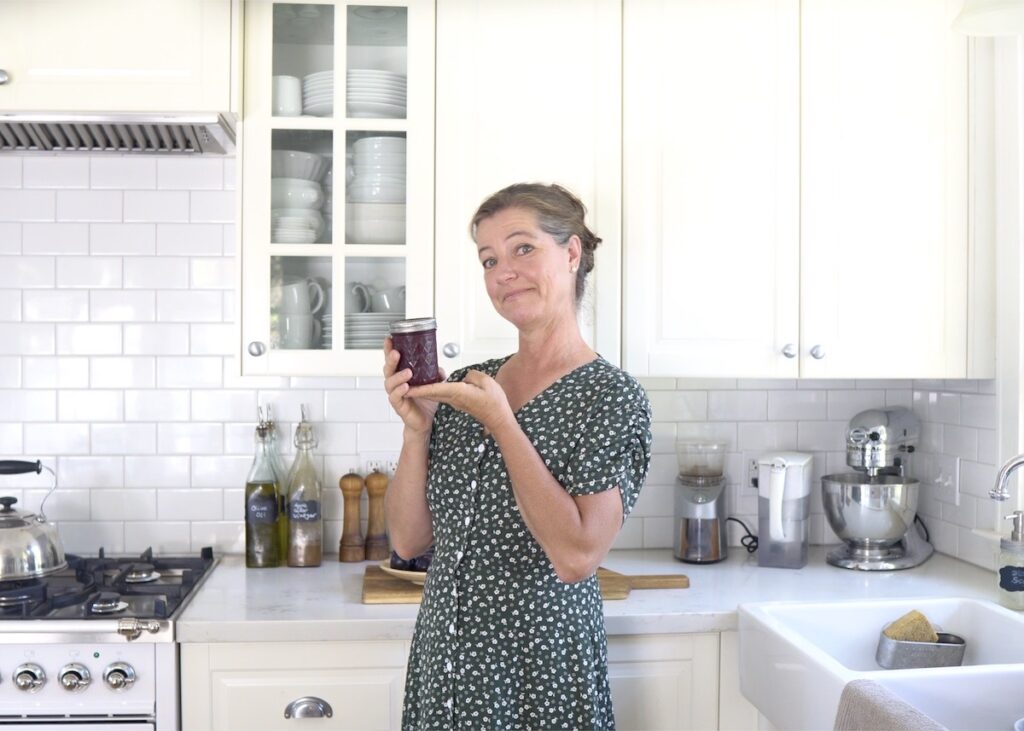
What is Botulism?
Clostridium botulinum is found in soil and untreated water throughout the world.
Sometimes it’s best to borrow a well-written definition from a reputable source, namely the Center for Disease Control: “Botulism is a rare but serious illness caused by a toxin that attacks the body’s nerves and causes difficulty breathing, muscle paralysis, and even death. This toxin is made by Clostridium botulinum […]. These bacteria can produce the toxin in food, wounds, and the intestines of infants..” (CDC website: https://www.cdc.gov/botulism/index.html)
The bacterium Clostridium botulinum most often grows in the soil and untreated water. “It produces spores that survive in improperly preserved or canned food, where they produce a toxin. When eaten, even tiny amounts of this toxin can lead to severe poisoning. Foods that can be contaminated are home-canned vegetables, cured pork and ham, smoked or raw fish, and honey or corn syrup, baked potatoes cooked in foil, carrot juice, and chopped garlic in oil” (https://medlineplus.gov/ency/article/000598.htm)
The botulism spores in themselves will not make you sick and they will be destroyed by your stomach acid. It is only when the clostridium botulinum bacteria find the right conditions to grow that they will produce a metabolic by-product, namely the toxin that can cause this deadly illness.
Why is Botulism so dangerous?
As stated above, the botulinum toxin can make people seriously ill by paralyzing body parts, usually from the top down. For example, the symptoms of botulism often start with blurry or double vision and difficulty swallowing and speaking. Then you might experience difficulty breathing, respiratory failure, and muscle weakness before the digestive tract would be affected. If untreated, people can die from it.
Not to scare you but you can’t really detect this deadly toxin so the best way to avoid botulism poisoning is by learning about it.
How many people actually get food-borne botulism in the United States?
The latest statistic I could find is from 2018 (https://www.cdc.gov/botulism/surv/2018/index.html) in which there were 18 reported cases of food-borne botulism. It looks as though nobody died, though.
When you look at the report, all these cases seem to be related to the kind of food made or canned at home with protein in it (meat, poultry, fish, beans, even green beans).
Interestingly enough, most cases of botulism seem to be infant botulism which is often caused by babies under 12 months ingesting honey.
What makes the botulism bacteria grow?
In order to understand how to avoid getting sick from botulism it first helps to know under what conditions this bacteria can grow:
- low or oxygen-free environment (anaerobic conditions)
- low acid content
- low sugar content
- low salt content
- a certain temperature range
- high moisture/water
You can actually have viable botulism bacteria in your food but as long as it doesn’t grow, it doesn’t produce any toxins. The toxins are a metabolic by-product of when this bacteria grows.
Therefore, these are some good recommendations and proper canning techniques:
- pickled foods or anything in vinegar, especially for low acid foods
- high sugared foods such as jams or candy
- salted foods such as sauerkraut
- foods that you keep in the refrigerator or freezer or boil
- dehydrated foods
Many foods use more than one of these methods for home food preservation.
(https://www.fda.gov/food/laboratory-methods-food/bam-chapter-17-clostridium-botulinum)
If in doubt, I always recommend you follow the safe canning guidelines by the FDA (https://www.fda.gov/media/107843/download), CDC (https://www.cdc.gov/botulism/prevention.html), and USDA (https://www.nifa.usda.gov/about-nifa/blogs/usdas-complete-guide-home-canning).

How to avoid botulism in home-canned foods and preserves
If you look at the previous paragraph you can deduct from it what conditions you need to create in your jams and preserves so that the botulism bacteria can’t grow.
Since in home-canning we are trying to create a vacuum, the low oxygen or no oxygen environment is a given.
If you are making jams or marmalades, you are probably using high acid fruits that have a naturally low pH. The botulism bacteria cannot grow in foods with a pH of 4.6 or less. Most but not all fruits are acidic enough to inhibit the growth of botulism. For low-acid foods, I recommend adding lemon juice or citric acid. By boiling the jams or preserves for a while and adding sugar, the risk of getting any bacterial growth in your jars is extremely low.
Also, most fruits don’t have contact with the soil where this bacterium often grows.
However, if you’d like to can meat or beans or foods with proteins, or let’s say carrots (that grow in the soil), they tend to have a higher pH. Therefore, you would need to process them longer at higher temperatures. Usually, the lower the temperature the longer you need to boil them and vice versa.
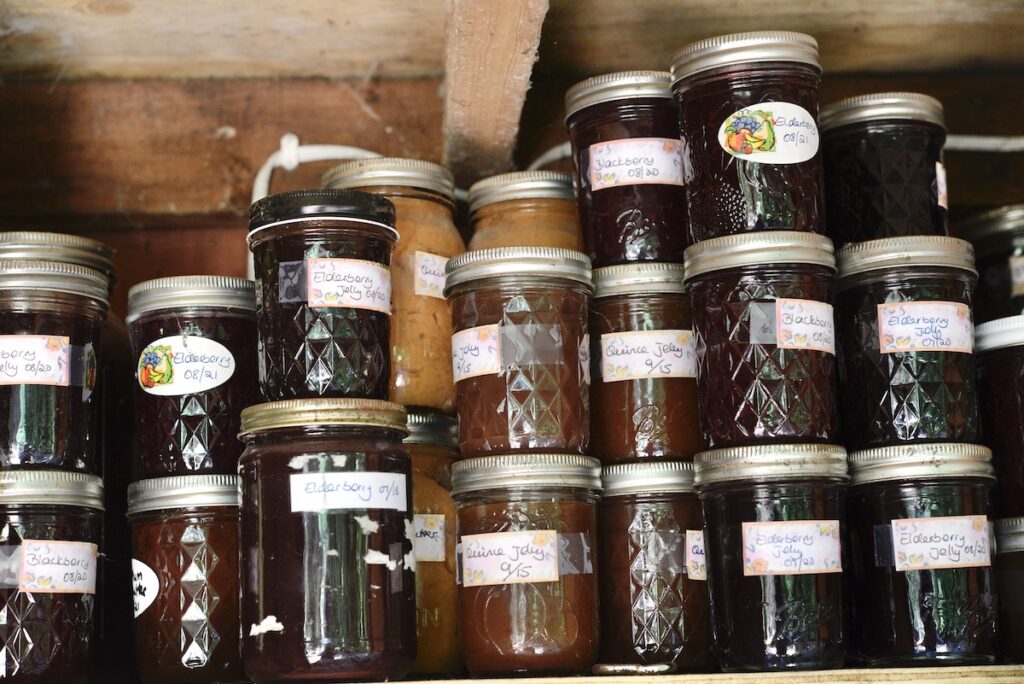
How to know whether you might have botulism in home-canned foods and preserves
Here are some simple ways to tell whether you might have Clostridium botulinum in your preserves. Even better, I will explain how you can avoid it altogether, even if you’re not 100% sure whether you have it in your cans or jars.
In case of doubt, it is always best to throw out the whole jar. Resist the urge to even look at your preserve or smell it because those aerosols can already be toxic.
- Inspect your seal. If you have a proper vacuum, you can safely assume that your food is safe to eat. For mason jars that means that you cannot press the lid down. For twist-off jars, that means that you can hear a “plop” when you open them. And for the German Weck jars, you would not be able to lift off the lid.
- Check the time. It is always important to write the exact date of canning on the jar. If you are in doubt and if you’re keeping your cans at room temperature, simply leave your jars for 6 weeks. If the conditions would have been right for the botulism bacteria to grow it would have done that. A sure sign would be a domed lid or the loss of a proper seal.
- Properly boil your food. If your canned beans were vacuum-sealed, look good, smell good but you’re still not sure, simply bring them to a proper boil until they’re heated all the way through. The botulism toxin is not heat-stable and is killed off at higher temperatures of 185˚F or boiling for 10 mins.
Why not simply use the water bath or pressure canning method?
This is a really good question!
Of course, I am not telling you what to do. If you have been using a boiling water canner or pressure cooker and feel good about them, you should absolutely continue using them.
I, on the other hand, have never used them and probably won’t for the following reasons:
- They require extra and special equipment that I don’t want to make the space for.
- Pressure or water bath canning takes extra time. I like to keep things simple.
- And long processing times further lower the nutritional content (mostly vitamins) of my preserves.
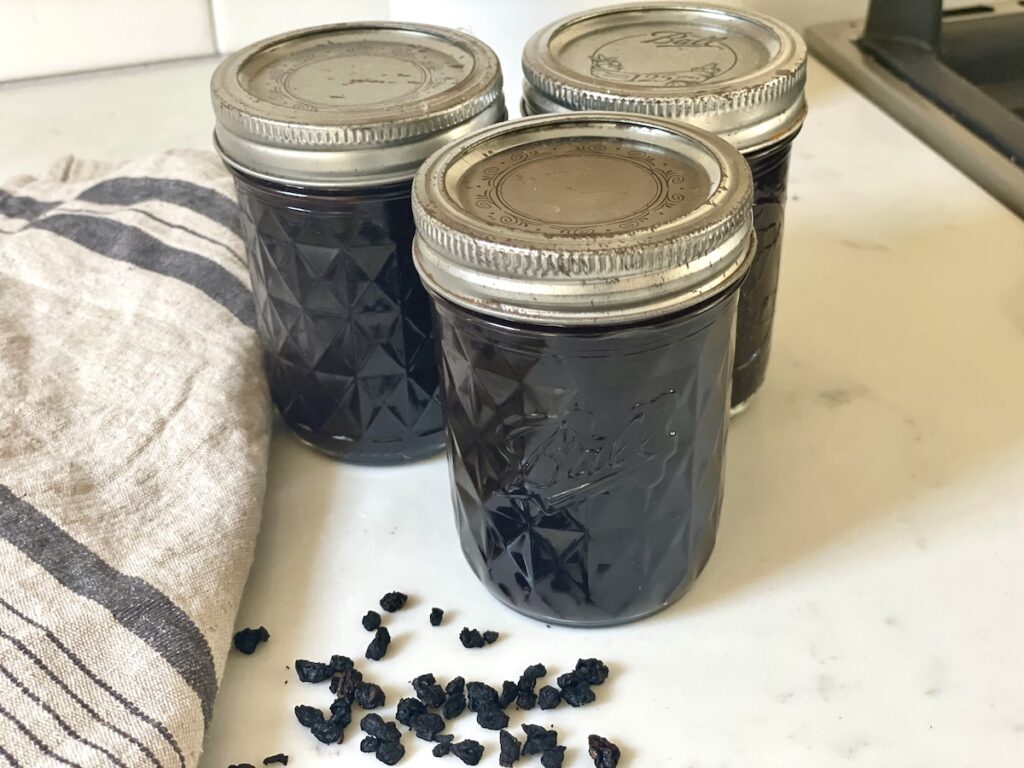
What now?
Again, the reason for this post was not to persuade you one way or another. I only wanted to give you some information so that you can make informed decisions. Home canning is a wonderful way to preserve food products and it can be a lot of fun.
Since I mostly can jams and marmalades, I am okay with not using a water bath or pressure canner.
However, if and when I might get into canning soups, meats, and beans, I am sure I will use safe home canning practices!
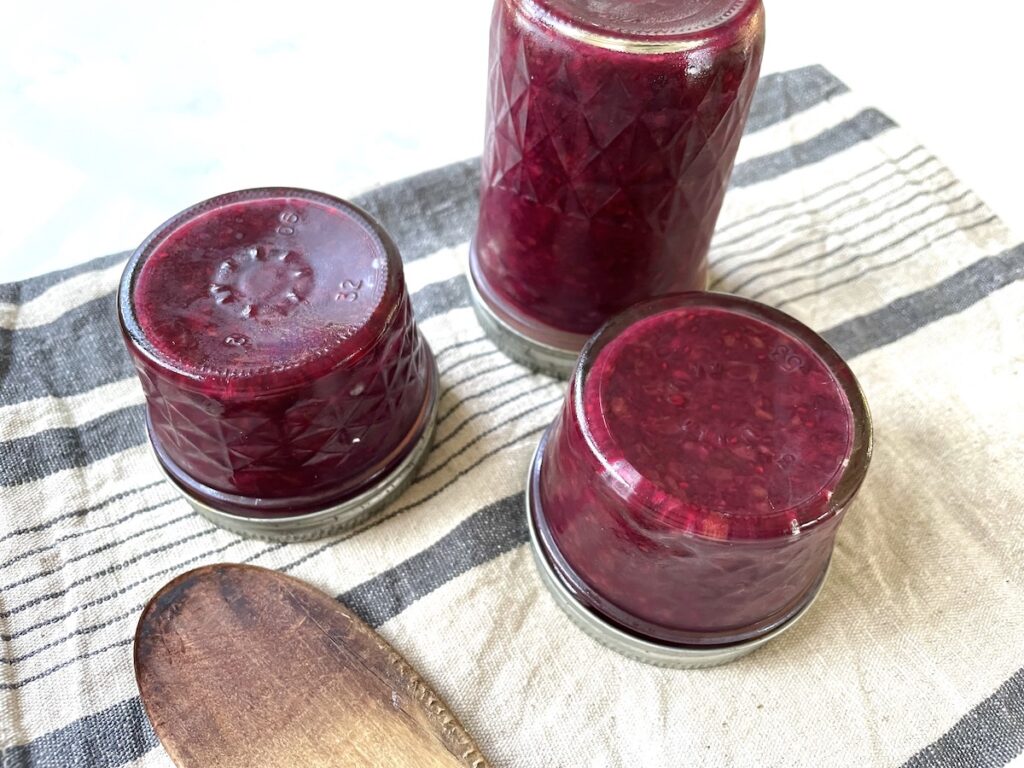
Other posts you might enjoy
Successful Canning Without Water Bath
Do you have questions or comments? Let me know below!
Pin for Later:
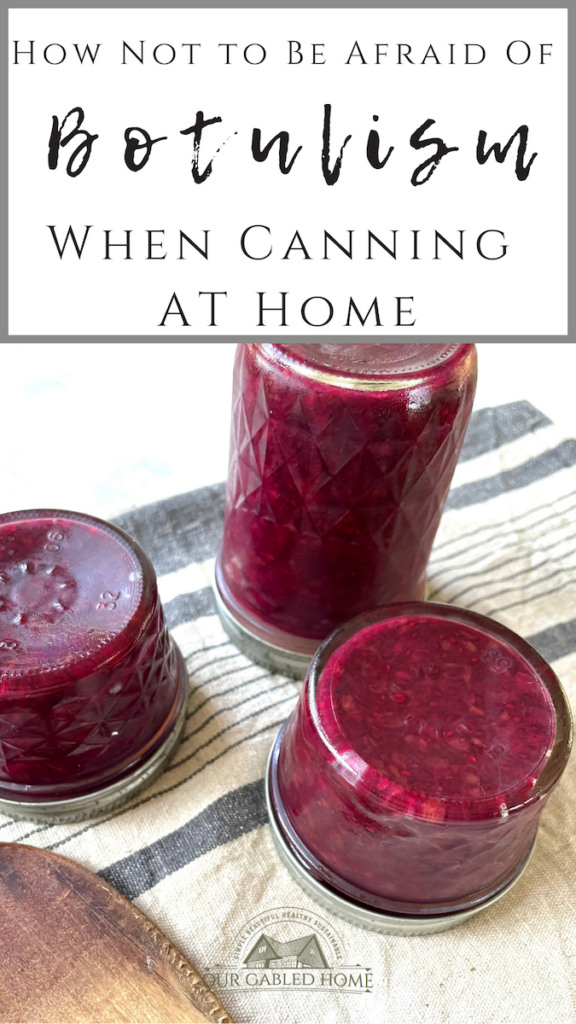


Thank you for all of the useful information, I really appreciate getting the emails.
I am so glad to hear that!!
I have always canned without a waterbath canner and by simply turning the jars upside down but I never knew anyone else who did that! I’m so happy to read this article and be more informed about botulism b/c every once in awhile I feel guilty not using a canner and wonder if my food could be dangerous. Now I know! Thank you so much!
I am so glad you found this helpful ~ Anja
Thanks for the info! Would this work for things such as applesauce and apple butter? And salsa?
This method works for anything that has a pH lower than 4.6. You can always add some lemon juice to the apples. As for the salsa, it really depends on the ingredients. Hope this helps ~ Anja
We make gallons of salsa every year without a water bath. Our recipe includes a very small amount of vinegar and we have never had an issue. Here’s what we do: wash the jars, ladles, and canning funnels in the dishwasher and place the dry jars in the oven at 180 – 200F for an hour. (Tip: you can get a LOT of jars in there if you lay them on their sides and stack them.) Wash the vegetables very well. Boil the lids and bands for 10 minutes. While keeping the salsa hot, we remove just 2 jars at a time and ladle the salsa into the jars, place a hot lid and band on them, finger tighten, and set on a towel to cool completely. If any salsa gets on the jar, we wipe it clean with a small piece of paper towel. If the band or lid gets salsa on it, it gets rinsed well and boiled for another 10 minutes. Out of 48 jars, we may get 2 that don’t seal. Those go in the fridge.